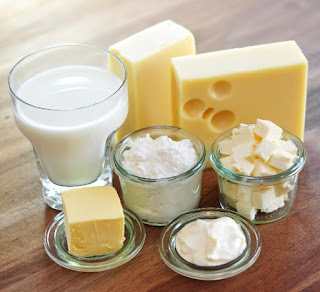Obesity || How to Prevent ? Assessment of Obesity
OBESITY
Obesity is a state in which there is a generalist accommodation of excess adipose tissue in the body leading to more than 20% of the desirable weight. Overweight is a condition where the body weight is 10% to 20% greater than the mean standard weight for age, height and sex.
ASSESSMENT :
1. BMI ( Body Mass Index ) : Also called Quetlet Index. This index does not require any standard tables.
Weight (kg)
BMI = ----------------
Height² (m)
Grading of obesity can be done based on BMI.
Grade III - >40
Grade II - 30-40
Grade I - 25 - 29.9
Not obese - <25
2. Broka's index : the formula for broka's index is
Height (cm) -100 = ideal weight (kg).
This measurement it is easy to calculate and accurate.
COMPLICATIONS OF OBESITY :
• Physical disability : Since the feet have to carry extra load, complications like flat feet, lumbar spine are common.
• Metabolic disorders : Like diabetes, gout, atherosclerosis are common for excess cholesterol in plasma.
• Cardiovascular disorder : Apart from atherosclerosis, obese people develop high blood pressure and increased incident of varicose veins.
• Sleep apnea : A transitory cessation of breathing is increasingly identified in obese children and adolescence.
• Gall stones : Obese people have higher output of cholesterol in bile, with a lower concentration. So their bile is constantly in danger of of forming gall stones.
• Osteoarthritis : It is a very common complication of obesity, in the knees of middle aged women and causes significant disability.
• Obsterical risks : obese women when pregnant have greater Obsterical risk because of hypertension, diabetes and postpartum infection.
• Low life expectancy : The statistics of of Metropolitan Life Insurance USA, shows that for a man aged 45, an increase of 12kg above standard weight reduces his life expectancy by 25%.
Uterus, biliary tract, breast and ovary in women.
CAUSES OF OBESITY :
a. Genetic factors : Genetic inheritance probably influences 50% to 70% a person's chance of becoming fat more than any other factor.
b. Age and Sex : It can occur at any age in either sex as long as the person in under positive energy balance.
c. Eating habits :
• Nibbling between meals is common among housewives and is a potential cause for obesity.
• Some may eat faster taking less time for chewing, therefore they tend to consume more food.
• People who eat junk food ( high fat, high carbohydrate ) may become obese.
• Non-inclusion of fruits and vegetables and non vegetarian diet favour weight gain.
• Some may eat more food when they are unhappy as a compensation mechanism.
d. Physical activity : Obesity is found in Parsons who lead sedentary lives and pay less importance physical education.
e. Stress : food is one of the many stimulants of endorphin, "feel good" neurotransmitter. Self gratification, self punishment, depression, anxiety, stress may lead to excess calorie intake.
f. Endocrine factor : Obesity is common at puberty, pregnancy and menopause, suggesting endocrine maybe a factor in obesity.
DIETARY GUIDELINES :
• The patient should be convinced that there is no other way of reducing weight except by consuming less calories than needed by the body.
• The diet should be high in fibre.
• Maintaining weight is lifelong process. Hence after 40, one should know appreciating low calorie foods and rejecting heavy sweets should become natural way of life.
• Exercise reduces body fat and increases muscle mass brings down blood pressure, blood sugar, blood cholesterol, reduces stress and improves feeling of well being.
• Obese patient should be encouraged to eat "unprocessed" foods and foods in their natural forms.
• They should limit fat, sucrose and alcohol.
SUGGESTED RECIPES :
FOODS REASON
1.Vegetable salads Low calorie and high fibre.
2.Chapaties without oil More proteins and high fibre and give satiety.
3.Thin dals, steamed foods like- To limit calories, increase protein content.
like- idlis
4.Thin soups Provide fluids, low calorie value, provides
fullnes.
5.Poached fish Low in calories, high in proteinof good quality.
6.Boiled chowli Rich in protein and B vitamins.
7.Greens Porial High in fibre.
8.Coffee, tea without sugar Low calories.












Comments
Post a Comment
Please do not enter any spam link in the comment box.